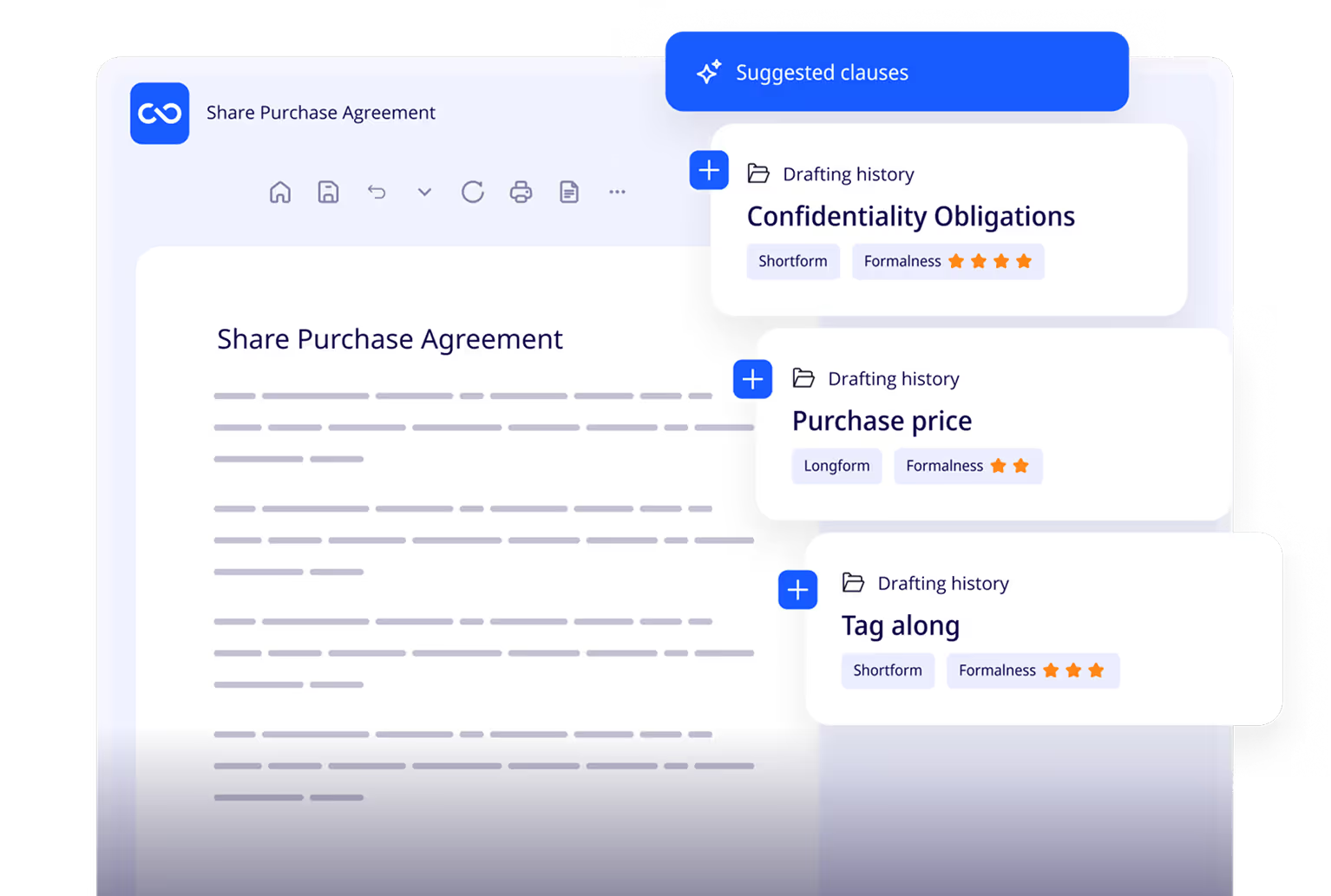
Clause-based vs template-based drafting
ClauseBase uniquely allows you to choose between clause-based and template-based drafting.Both approaches ultimately lead to the same result: an automated version of a legal document. However, they could not be more different, and each have their own use cases.
Advanced drafting through clause-based automation
Unlike traditional template-based tools, clause9 uses a clause-based approach, a more flexible, modular, and powerful way to automate legal documents. This unique method gives legal experts full control over structure, content, and style without sacrificing speed.

Clause-based drafting
Clause-based drafting is a novel, bottom-up approach towards document automation. It requires you to split templates into individual clauses and then stack those clauses together into a full document. It involves more preparation, but is much more flexible. While several drafting products allow to store clauses alongside templates, very few offer a truly clause-based approach.
Clause9 was built from the ground up to offer a unique, 100% clause-based approach.
Clause-based drafting is like building a legal construction using a nice collection of basic blocks. You can build anything you want, with any variation you can imagine, but you need to carefully think about your creation and plan ahead. Obviously, you don't become a true Lego master in a day.

Template-based drafting
The template-based approach is the traditional approach towards document automation. It is used by ClauseBuddy' Smart Templates and almost every other legal automation tool on the market, because it is an easy-to-learn approach that quickly yields good results.
Essentially, it is a top-down approach where you start from an existing template and apply some changes in order to arrive at the final document.
Template-based drafting is like buying a predefined Lego set, such as a medieval castle or a cool race car. They are quick to build and require limited planning, but are also limited in variation — you can perhaps swap the color of a few bricks, but forget about significantly tuning your race car










